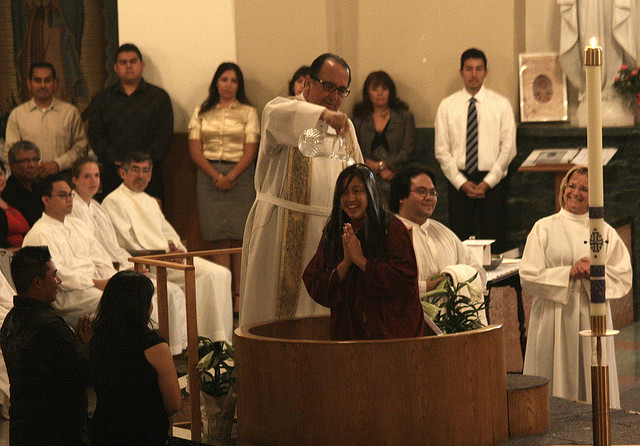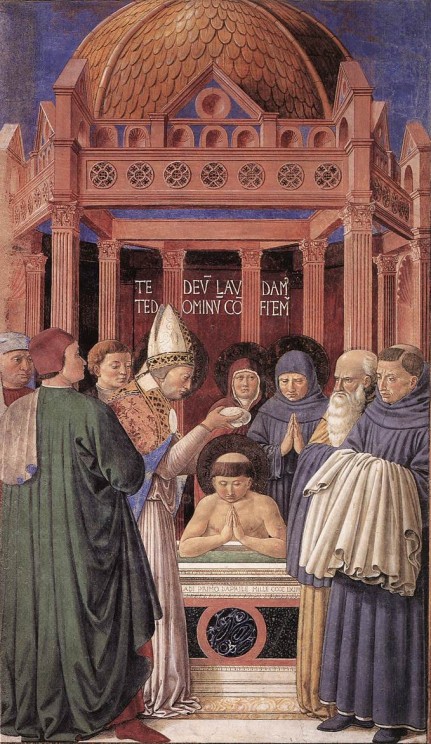In a prior article, I discussed the bare-bottom basics of email marketing. It’s about understanding the value of your subscribers and offering a really, really helpful freebie. Along with appreciating subscribers and offering a great freebie, in order to get subscribers on your email list you need to word your opt-in text just right. Today’s audience knows they can get just about anything
Viewing: Blog Posts Tagged with: conversion, Most Recent at Top [Help]
Results 1 - 5 of 5
Blog: Writing for Children with Karen Cioffi (Login to Add to MyJacketFlap)
JacketFlap tags: email marketing, conversion, call-to-action, email opt-in copy, subscriber email list, Add a tag
Blog: OUPblog (Login to Add to MyJacketFlap)
JacketFlap tags: Books, Religion, Easter, catholic church, United States, Humanities, minimalistic, RCIA, conversion, initiation, *Featured, becoming catholic, David Yamane, yamane, American Religious Landscape, Finding Rome, parishes, initiation—baptism, Add a tag
By David Yamane
For many Catholics in America, waking up in the morning to find no news about the church is a relief. They won’t have to deal with stories about the lingering stench of the priest sexual abuse scandal, the consolidation of parishes and closing of schools, controversy over Catholic hospitals and the loss of Catholic youth, fewer and older nuns and more and younger “nones.”
But what if no news was not the only good news? What if Catholics turned on their TVs and opened their papers on Easter Sunday and heard some real good news instead?
At Easter Vigil Masses on Saturday night, 19 April, something truly remarkable will take place. Tens of thousands of adults in thousands of parishes across the United States became Catholic. For most of them, this rite of passage is the climax of a months- (and in some cases years-) long process of formation called the Rite of Christian Initiation of Adults (RCIA).
As I have written previously, the implementation of this modernized ancient process of initiation is an excellent example of the contemporary re-invention of rites of passage and a fruitful legacy of the Second Vatican Council. It is a Catholic success story.
Although based on a single, universal ritual text, the way the RCIA process is implemented differs from parish to parish. We do well to remember a variant on Tip O’Neill’s quip that “all politics is local.” All Catholicism is local. In some parishes we find elaborate and beautiful rituals, rich with fragrant oils and soaring hymns and full body immersion in the waters of baptism. In some parishes, we see minimalistic ceremonies that strain the use of the term ritual.
Regardless of the quality of the celebration, however, through the sacraments of initiation—baptism, confirmation, and Eucharist—individuals become Catholic. When the officiating minister speaks the words and performs the actions of the sacraments—“I baptize you…” and “Be sealed…” and “Receive the Body of Christ”—from the perspective of the church, they have the intended effect. It does not matter if the priest says the words excitedly, sincerely, or in a monotone while yawning under his breath. It does not matter if a team of 20 catechists and thousands of parishioners welcome the new Catholic warmly and profusely, or if a single deacon rushes through a minimalistic ceremony while a few dozen assembled individuals wait impatiently for communion. It does not matter if the symbols of the initiation ceremony are rich or sparse. An individual who receives the sacraments of initiation in a Catholic Church is a Catholic. The individual now can check the “Catholic” box, join a parish, receive communion, get married in the church, and so on.

Dark Side of the Moon album cover. Via pinkfloyd.com.
This fact reminds us that, at the same time that all Catholicism is local, we can also say that no Catholicism is only local. Without the universal church, there would be no RCIA process in local parishes. The Vatican II document Sacrosanctum Concilium (promulgated in 1963) led to the editio typica of the Ordo Initiationis Christianae Adultorum (issued in 1972), which led to the vernacular typical edition of the Rite of Christian Initiation of Adults (published in 1988), which has gradually been implemented in US parishes. Understanding this movement from universal to local is important. I think of this as being like the image on the cover of Pink Floyd’s album, “Dark Side of the Moon.” The album cover shows a beam of white light hitting a triangular prism, which refracts it to create a rainbow of colors. The culture and resources of local parishes do act as prisms, but without the light, you have no rainbow.
With unprecedented opportunities to choose a religion (or no religion) and to choose how to practice that religion (or not practice), the fact that tens of thousands of people still voluntarily chose Catholicism again this year is indeed good news for American Catholics.
David Yamane teaches sociology at Wake Forest University and is author of Becoming Catholic: Finding Rome in the American Religious Landscape. He is currently exploring the phenomenon of armed citizenship in America as part of what has been called “Gun Culture 2.0″—a new group of individuals (including an increasing number of women) who have entered American gun culture through concealed carry and the shooting sports. He blogs about this at Gun Culture 2.0. Follow him on Twitter @gunculture2pt0.
Subscribe to the OUPblog via email or RSS.
Subscribe to only religion articles on the OUPblog via email or RSS.
The post Easter rites of initiation bring good news for American Catholics appeared first on OUPblog.
Blog: OUPblog (Login to Add to MyJacketFlap)
JacketFlap tags: Religion, Easter, catholic church, baptism, Humanities, RCIA, conversion, initiation, megachurch, *Featured, becoming catholic, David Yamane, Finding Rome in the American Religious Landscape, yamane, catechumenate, catechumenal, Add a tag
By David Yamane
The American religious landscape is ever changing. The rise of religious nones, the spiritual not religious, thoughtful spirituality, the emerging church, online religion, megachurches, and on and on.
As a sociologist of religion who specializes in Roman Catholicism, it is easy to feel old-fashioned in the face of so much novelty. But in its typically deliberate way, the original megachurch in America continues to make its mark on the religious landscape.

Easter Vigil Baptism, April 11, 2009. Image Credit: Photo by IC MONROVIA RCIA, CC 2.0 via Flickr.
On Saturday night, April 19th, at Easter Vigil Masses in most of the 17,000+ parishes in the United States, tens of thousands of individuals will join the Catholic Church. On average over the past ten years, 67,000 adults annually have been baptized Catholic and 83,000 baptized Christians annually have been “Received into Full Communion” with the Roman Catholic church in the United States.
To put these numbers in perspective, these 1.5 million people becoming Catholic over the past decade in themselves would comprise one of the 20 largest religious bodies in America. Catholic converts collectively are about 11% of all Catholics in the United States today. These 5.85 million individuals would be the fifth largest religious body in America, just ahead of the Church of God in Christ and behind the Church of Jesus Christ of Latter Day Saints (the Mormon Church).
These numbers are impressive, but even more notable is that most adults who become Catholic in America today do so through an elaborate initiation process that is both ancient and modern: the Rite of Christian Initiation of Adults (RCIA).

Baptism of St Augustine, public domain via Wikimedia Commons.
In the ancient church, adult baptism was preceded by a structured period of instruction (“catechesis”), which could last as long as three years. Individuals undergoing instruction were called “catechumens” (“hearers of the word”) and the period of instruction was called the “catechumenate.” The process also called for a number of pre-baptismal rites associated with purification and exorcism in preparation for initiation.
As the church’s attention shifted to infant baptism, these rich traditions of adult initiation fell by the wayside. By the mid-20th century in the United States, the process of adult initiation was brief, private, and focused on doctrinal instruction. But the church would soon “modernize” the process of adult initiation, not by looking to the future, but by looking to the past.
French theologians call this ressourcement – looking to the ancient church for models of liturgy and practice to be implemented in the contemporary church. In this way, the church uses tradition to renew tradition. This is exemplified by the call to restore the ancient catechumenate for adults in the Second Vatican Council’s 1963 Constitution on the Sacred Liturgy (Sacrosanctum Concilium, nos. 64-66).
That call led to the publication in 1972 of a new book of rites for adult initiation, in Latin of course, called Ordo Initiationis Christianae Adultorum (the Latin editio typica or “typical edition”). A provisional English translation of this new “order of initiation” was introduced into the Catholic Church in the United States in 1974 and the final official American English translation of the Rite of Christian Initiation of Adults (the “vernacular typical edition”) was published in 1988. At that time, the National Conference of Catholic Bishops also issued guidelines for and mandated the use of the new process.
Like the ancient model, the modern RCIA takes individuals through distinct periods of formation with public ritual transitions that move individuals from one period to the next. The process can take anywhere from months to years to complete. (Tomorrow, I will discuss in greater detail the nuts and bolts of the process.)
Since it was mandated in 1988, at least two million adults have been initiated into the Catholic Church through the RCIA process. But the Catholic Church does not only make its mark on the American religious landscape numerically. The RCIA has also become an influential model of initiation for other Christian traditions. Among the denominations that have implemented a catechumenal process of initiation are the Episcopal Church USA, Evangelical Lutheran Church in America, and the Mennonite Church USA. In 1995, the North American Association for the Catechumenate was founded as an ecumenical group to support and promote the catechumenal process of initiation outside the Catholic Church. Denominational partners include the Anglican Church of Canada, Evangelical Lutheran Church in Canada, Presbyterian Church (USA), Reformed Church in America, and the United Methodist Church.
The influence of the RCIA both inside and outside the Catholic Church suggests that it is one of the most fruitful — if one of the least recognized — legacies of the Second Vatican Council.
David Yamane teaches sociology at Wake Forest University and is author of Becoming Catholic: Finding Rome in the American Religious Landscape. He is currently exploring the phenomenon of armed citizenship in America as part of what has been called “Gun Culture 2.0″ — a new group of individuals (including an increasing number of women) who have entered American gun culture through concealed carry and the shooting sports. He blogs about this at Gun Culture 2.0. Follow him on Twitter @gunculture2pt0.
Subscribe to the OUPblog via email or RSS.
Subscribe to only religion articles on the OUPblog via email or RSS.
The post Initiation into America’s original megachurch appeared first on OUPblog.
Blog: Writing for Children with Karen Cioffi (Login to Add to MyJacketFlap)
JacketFlap tags: inbound marketing strategies, online marketing, landing pages, conversion, Add a tag
According to Hubspot.com, “A landing page is a web page that allows you to capture a visitor's information through a lead form.”
Copyblogger.com says, “A landing page is any page on a website where traffic is sent specifically to prompt a certain action or result.”
So, landing pages are designed for specific purposes, such as a selling page for a product or service or for an email opt-in. But, no matter what the purpose is, it must be focused.
The page itself can be a separate website or a page on an existing website. But, since you want it completely focused, without distractions, a separate website usually works better.
It’s this landing page focus that allows for better conversion.
An effective landing page is designed and focused on a target market. This means if your site pertains to a specific cancer or illness, your content, opt-in, and any products you’re selling should focus on people dealing with this particular health issue. That’s your target market. And, your keywords should also reflect the page’s purpose.
If your site is about baseball, the same holds true. The landing page design, content, and any products or services being offered must pertain to baseball.
The landing page is kind of like a path on which there’s no way to stray off or be distracted. It’s intended for visitors to read exactly what you want them to, guiding them to say YES to your offer. There are no other pages for them to click on and hopefully no sidebar to be distracted by.
While inbound marketing strategies will get the visitor to your landing page, it’s the copy or content that will motivate him to follow the path and be responsive to saying YES.
Your content needs to be conversational, effective, and provide the WIIFM (what’s in it for me). People are overwhelmed with the amount of information being bombarded at them and with all the offers for books, ebook, and products. You need to write copy that (1) quickly lets the reader know what you’re offering, (2) lets the reader know exactly what the benefits are, and (3) lets the reader know what you want her to do.
Landing pages are no place for guessing games. They need to be fine-tuned, to the point, and simple. The more hectic you make the page, the more anxiety it will cause the reader. Anxiety isn’t good for conversion. Simple always works best.
You should also create separate landing pages for different offers or purposes. In other words, you don’t want to explain why a visitor should opt into your mailing list on your book selling landing page. And, you shouldn’t sell books on your subscriber opt-in page. Focus is a key element to motivating or leading a visitor to go through the necessary steps to saying YES to whatever it is you’re offering.
Bringing traffic to landing pages is done through inbound marketing strategies, such as email campaigns, special offers, guesting posting, and press releases. Other inbound marketing techniques include pay-per-click, ad banners, social networks, and affiliates.
~~~~~
RECOMMENDED TOOL - SPEEDY WEB VIDEO
Another tool to boost conversion is marketing with video. If you have an information email or information product, or if you are selling a book or service, the most effective strategy for conversion is videos. Speedy Web Videos is an ecourse that teaches you, with step-by-step instructions, to create your own videos. Check it out today - CLICK HERE!
~~~~~
MORE ON ONLINE MARKETING
Do You Have an Online Marketing Focus?
7 Elements of an Effective Landing Page Designed to Increase Your Mailing List P1
Text and Images – The Perfect Combination
~~~~~
To keep up with writing and marketing information, along with Free webinars, join us in The Writing World (top right top sidebar).
Karen Cioffi
Award-Winning Author, Freelance/Ghostwriter
Author Online Presence Instructor
Create and Build Your Author/Writer/Home Business Online Presence
http://www.karencioffi.com/author-online-presence-ecourse/
Karen Cioffi Professional Writing Services
http://karencioffifreelancewriter.com/karen-cioffi-writing-services/
~~~~~
Blog: Sugar Frosted Goodness (Login to Add to MyJacketFlap)
JacketFlap tags: conversion, illustration, metin seven, sevensheaven, scanner, windows, hands, scanning, laptop, screenprint, document, Add a tag



Stock illustrations.
Sevensheaven images and prints are for sale at sevensheaven.nl






